“What do you need to be successful?” That was the question posed in 2013 by Carter Smith, Texas Parks and Wildlife Department (TPWD) Executive Director, to hatchery staff. The topic of conversation was TPWD’s efforts to incorporate southern flounder into its stock enhancement program.
Since 2006, TPWD has worked on perfecting the spawning, larvae culture and live feed techniques required to raise southern flounder fingerlings. Numerous trial and error, hands-on training courses, collaboration with leading fisheries researchers, and pure grit and determination payed significant dividends as the hatchery program was consistently releasing flounder fingerlings on an annual basis. Senior TPWD staff and leaders in the industry were beginning to notice these early successes and it was clear that they wanted to help.
Feeling confident that the staff could effectively ramp up production scales with the institutional knowledge and skills obtained over years, staff answered Mr. Smith’s question with a one word answer. “Space”. They needed the space to increase production levels from releasing tens of thousands fingerlings annually to releasing hundreds of thousand fingerlings annually.
With the blessing and support of TPWD executive management, hatchery program leaders Dr. Robert Vega, David Abrego and Shane Bonnot approached CCA Texas with the novel concept of constructing a modest building at Sea Center Texas in Lake Jackson and in June of 2014, CCA Texas committed $225,000 to help fund what would be suitably termed “The Flounder Building.” CCA Texas recently released an additional $100,000 to furnish the building with specialized equipment needed to raise southern flounder larvae.

Sea Center Texas Flounder Building. Photo Credit: David Abrego
The phrase “it only takes a spark to get a fire going” comes to mind, for it did not take long for the TPWD coastal fisheries and infrastructure divisions to add money to the project and develop a long term plan that would bring about not one but two flounder buildings for the hatchery program. One located at the aforementioned Sea Center Texas and the other at the CCA-Marine Development Center in Flour Bluff. These two buildings will allow the hatchery program to raise southern flounder in a temperature-controlled environment using tank systems that are optimized specifically for flatfish culture. Long gone will be the days where hatchery staff have to utilize hatchery systems designed for red drum to raise southern flounder larvae. Once the two climate controlled flounder buildings come on-line, TPWD will be able to expand flounder culture efforts into seasons that have traditionally been too warm to raise the demanding larvae. This potential increase in production may play a vital role in sustaining southern flounder recruitment as the natural wild stock continues to struggle during warmer winters.
Without question, these new buildings will be a game changer for southern flounder stock enhancement efforts. It is difficult, often times impossible, to have success without support. The outpouring of support that the hatchery program has received from TPWD executive management, CCA, volunteers and the general public are certainly setting the stage for a triumphant outcome, one that very well may help determine the future of flounder in Texas.











